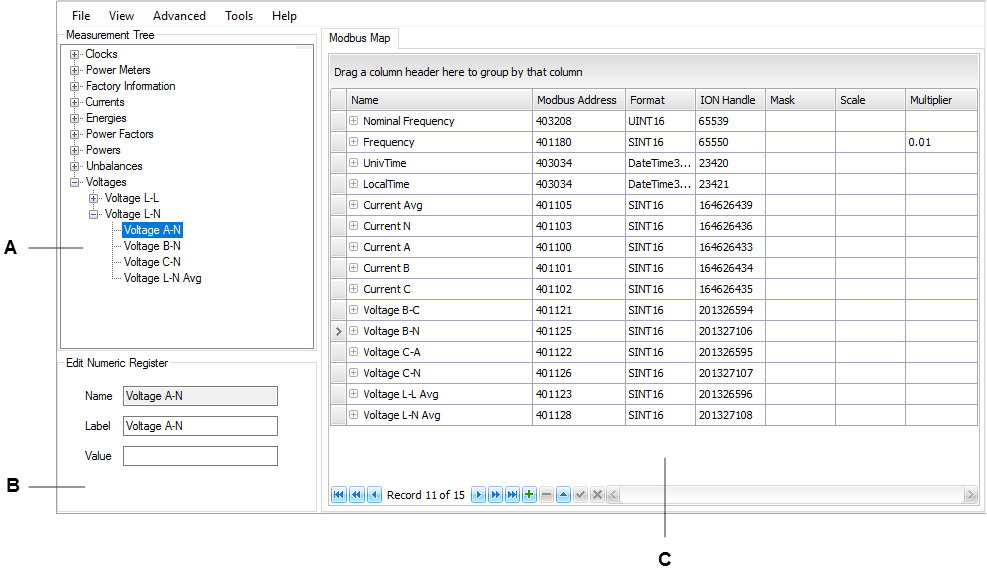Device Type Editor User Interface
Main user interface
| A |
Measurement Tree pane |
B |
String Register Details pane |
C |
Modbus/OPC Map pane |
Menu bar
| Menu |
Options |
| File |
| New: Create a new Modbus or OPC device type. |
| Open: Open an existing device type. |
| Save: Save the current device type. |
| Save As: Save the current device type to a different location. |
| Export: Export the current device type as text file in csv format |
| Exit: Close the Device Type Editor. |
|
| View |
| Measurement Tree: Show or hide the Measurement Tree display pane |
| Register Detail: Show or hide the String Register Details display pane |
| Register Map: Show or hide the Modbus Register Map display pane. Show or hide the Enumerations, Address Blocks, Invalid Addresses, and Device Info tabs. |
|
| Advanced |
| Show or hide the Handle Exclusions, Transaction Configuration, Time Sync Info, and Plugin Info tabs. |
|
| Tools |
| Configure Software Logging: Open the Configure Logging and Calculation tool |
| Expose OPC Measurements: Update the OPC measurement definition in the system |
| Clean Measurement Tree: Remove any unused managers, modules, registers from the tree |
| Install Device Type: Open the Device Type Installer |
|
| Help |
| Device Type Editor Help: Open the Device Type Editor help file. |
|
Context Menus
Right-click on a manager, module, or register in the ION Tree to open a context menu. The context menu provides access to the actions you can perform on the Measurement Tree, such as adding and editing managers, modules, and registers.
Right-click anywhere inside the Modbus/OPC Map table to open a context menu. The context menu provides access to the actions you can perform on the Map , such as inserting or deleting rows.
Right-click anywhere inside the Map table header row to open a context menu. The context menu provides access to actions related to the table format, such as sorting of the table content or showing or hiding table columns.
